ZMYND8 Reads the Dual Histone Mark H3K4me1-H3K14ac to Antagonize the Expression of Metastasis-Linked Genes
- PMID: 27477906
- PMCID: PMC4975651
- DOI: 10.1016/j.molcel.2016.06.035
ZMYND8 Reads the Dual Histone Mark H3K4me1-H3K14ac to Antagonize the Expression of Metastasis-Linked Genes
Abstract
Histone acetylation, including acetylated H3K14 (H3K14ac), is generally linked to gene activation. Monomethylated histone H3 lysine 4 (H3K4me1), together with other gene-activating marks, denotes active genes. In contrast to usual gene-activating functions of H3K14ac and H3K4me1, we here show that the dual histone modification mark H3K4me1-H3K14ac is recognized by ZMYND8 (also called RACK7) and can function to counteract gene expression. We identified ZMYND8 as a transcriptional corepressor of the H3K4 demethylase JARID1D. ZMYND8 antagonized the expression of metastasis-linked genes, and its knockdown increased the cellular invasiveness in vitro and in vivo. The plant homeodomain (PHD) and Bromodomain cassette in ZMYND8 mediated the combinatorial recognition of H3K4me1-H3K14ac and H3K4me0-H3K14ac by ZMYND8. These findings uncover an unexpected role for the signature H3K4me1-H3K14ac in attenuating gene expression and reveal a metastasis-suppressive epigenetic mechanism in which ZMYND8's PHD-Bromo cassette couples H3K4me1-H3K14ac with downregulation of metastasis-linked genes.
Copyright © 2016 Elsevier Inc. All rights reserved.
Figures
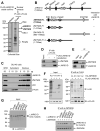
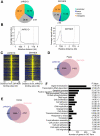
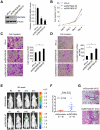
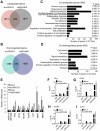
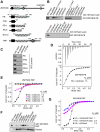
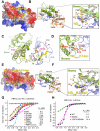
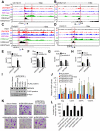
Similar articles
-
Targeting the histone reader ZMYND8 inhibits antiandrogen-induced neuroendocrine tumor transdifferentiation of prostate cancer.Nat Cancer. 2025 Apr;6(4):629-646. doi: 10.1038/s43018-025-00928-z. Epub 2025 Mar 18. Nat Cancer. 2025. PMID: 40102673
-
Dual histone reader ZMYND8 inhibits cancer cell invasion by positively regulating epithelial genes.Biochem J. 2017 May 19;474(11):1919-1934. doi: 10.1042/BCJ20170223. Biochem J. 2017. PMID: 28432260
-
Histone demethylase KDM5A regulates the ZMYND8-NuRD chromatin remodeler to promote DNA repair.J Cell Biol. 2017 Jul 3;216(7):1959-1974. doi: 10.1083/jcb.201611135. Epub 2017 Jun 1. J Cell Biol. 2017. PMID: 28572115 Free PMC article.
-
Epigenetic landscape of amphetamine and methamphetamine addiction in rodents.Epigenetics. 2015;10(7):574-80. doi: 10.1080/15592294.2015.1055441. Epigenetics. 2015. PMID: 26023847 Free PMC article. Review.
-
Regulation of ZMYND8 to Treat Cancer.Molecules. 2021 Feb 18;26(4):1083. doi: 10.3390/molecules26041083. Molecules. 2021. PMID: 33670804 Free PMC article. Review.
Cited by
-
Protein kinase C binding protein 1 inhibits hypoxia-inducible factor-1 in the heart.Cardiovasc Res. 2019 Jul 1;115(8):1332-1342. doi: 10.1093/cvr/cvy278. Cardiovasc Res. 2019. PMID: 30395227 Free PMC article.
-
Human endogenous retroviruses in cancer: Expression, regulation and function.Oncol Lett. 2021 Feb;21(2):121. doi: 10.3892/ol.2020.12382. Epub 2020 Dec 17. Oncol Lett. 2021. PMID: 33552242 Free PMC article. Review.
-
The RBM39 degrader indisulam inhibits acute megakaryoblastic leukemia by altering the alternative splicing of ZMYND8.Cell Biosci. 2025 Apr 13;15(1):46. doi: 10.1186/s13578-025-01380-3. Cell Biosci. 2025. PMID: 40223119 Free PMC article.
-
Targeting the histone reader ZMYND8 inhibits antiandrogen-induced neuroendocrine tumor transdifferentiation of prostate cancer.Nat Cancer. 2025 Apr;6(4):629-646. doi: 10.1038/s43018-025-00928-z. Epub 2025 Mar 18. Nat Cancer. 2025. PMID: 40102673
-
RACK7 recognizes H3.3G34R mutation to suppress expression of MHC class II complex components and their delivery pathway in pediatric glioblastoma.Sci Adv. 2020 Jul 17;6(29):eaba2113. doi: 10.1126/sciadv.aba2113. eCollection 2020 Jul. Sci Adv. 2020. PMID: 32832624 Free PMC article.
References
-
- Adhikary S, Sanyal S, Basu M, Sengupta I, Sen S, Srivastava DK, Roy S, Das C. Selective Recognition of H3.1K36 Dimethylation/H4K16 Acetylation Facilitates the Regulation of All-trans-retinoic Acid (ATRA)-responsive Genes by Putative Chromatin Reader ZMYND8. The Journal of biological chemistry. 2016;291:2664–2681. - PMC - PubMed
-
- Barski A, Cuddapah S, Cui K, Roh TY, Schones DE, Wang Z, Wei G, Chepelev I, Zhao K. High-resolution profiling of histone methylations in the human genome. Cell. 2007;129:823–837. - PubMed
-
- Berger SL. Histone modifications in transcriptional regulation. Curr Opin Genet Dev. 2002;12:142–148. - PubMed
-
- Bernstein BE, Mikkelsen TS, Xie X, Kamal M, Huebert DJ, Cuff J, Fry B, Meissner A, Wernig M, Plath K, et al. A bivalent chromatin structure marks key developmental genes in embryonic stem cells. Cell. 2006;125:315–326. - PubMed
Publication types
MeSH terms
Substances
Grants and funding
LinkOut - more resources
Full Text Sources
Other Literature Sources
Medical
Molecular Biology Databases
Research Materials

